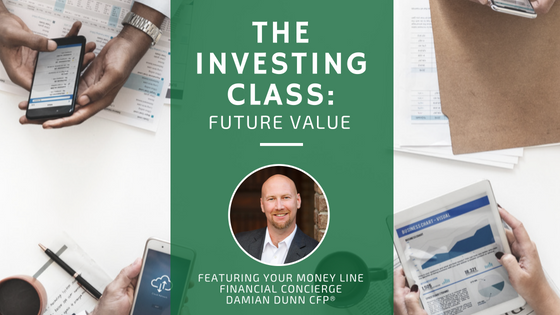
CONCEPT
Future Value
TECHNICAL DEFINITION
The future value of a sum is the amount to which an investment fund will grow over a certain period at a given rate of return, assuming compounding of returns. -- Hallman & Rosenbloom, “Private Wealth Management”, pg. 56
OUR DEFINITION
Future value is the projected amount of a present sum of money when time and growth are included.
WHY IT MATTERS
There are a handful of really important financial concepts to understand early in life, and this is one of them. Time-value of money calculations, future-value in this instance, have the power to transform your future if they are understood and leveraged at a young age. Once the basic calculation is understood, you can easily figure out future values for a lump sum of money and how the result is influenced by each piece of the equation, which is:
FV = PV x (1 + i)n
In order to understand the calculation, let’s examine each input:
FV = Future Value of the money
PV = Present Value of the money today
i = Interest rate used for calculation
n = Number of periods the investment will be held (months, years, etc)*
*It’s important to note that if you’re going to use months instead of years for your period of time, you must adjust the interest rate accordingly for the answer to make any sense.
An example scenario: Gary’s parents would like to contribute $15,000 to his 8-year-old daughter’s college 529 account. Gary expects his daughter to enter college in 10 years. Gary also expects the 529 account to return an average of 7% during that time period. What is the future value of the $15,000 contribution in 10 years?
FV = $15,000 x (1 + 0.07)10
FV = $15,000 x (1.9671)
FV = $ 29,506.50
If you don’t come to terms with this mathematical miracle as a young person, you will inadvertently make your life more stressful in the future. If you knew at age 22, for example, that if you invested $5,000/yr for the first 10 consecutive years of your career, and that money could be expected to grow at 8% per year until you retire (67), you’d have nearly $1.25MM waiting on you with only $50,000 of your own money invested (even less if you are including an employer match in the contribution). The reality is, as powerful and amazing as this concept is at a young age, it becomes something to be reckoned with as time passes and one of the inputs (periods) shrinks and becomes more and more fixed.
IF YOU INVEST ON YOUR OWN
If you’re familiar with the saying, “time is money”, now you can figure out exactly how much money that is. For example, if you’re considering making a $500 purchase, but want to know what that $500 could grow to in the future should you decide to invest the money instead, you can quickly figure that out.
The future value calculation can be a very powerful tool for both evaluation and encouragement.
IF YOU WORK WITH AN ADVISOR
If you work with an advisor, an understanding of this calculation can provide you with another level of understanding of their projections for your assets. If the advisor suggests lowering the expected return on your investments, you know that your future value is going to go down… unless you increase the period of time to let the investment grow. Or, if you aren’t projected to accumulate enough assets by the time you retire, you already know that the solution is going to be found by increasing the amount of money you have/contribute, the length of time invested, or the expected return.
Understanding how an advisor generates the future value of your assets will help take away some of the mystery of what they do and allow you and your advisor to focus on more important issues.
Stay up-to-date with the latest in employee wellbeing from the desk of Pete the Planner®. Subscribe to the monthly newsletter to get industry insights and proven strategies on how to be the wellness champion your team wants you to be.